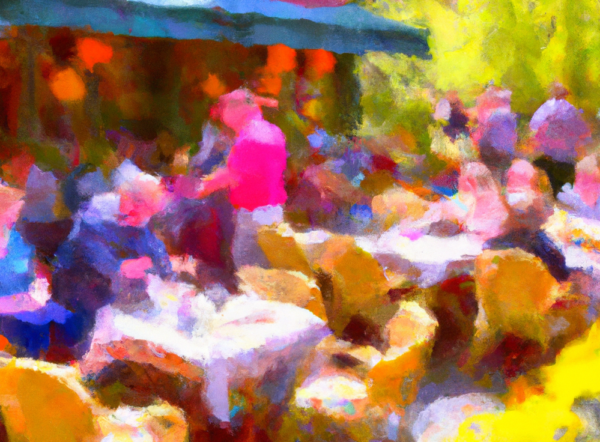
Fish Filets Poached in White Wine
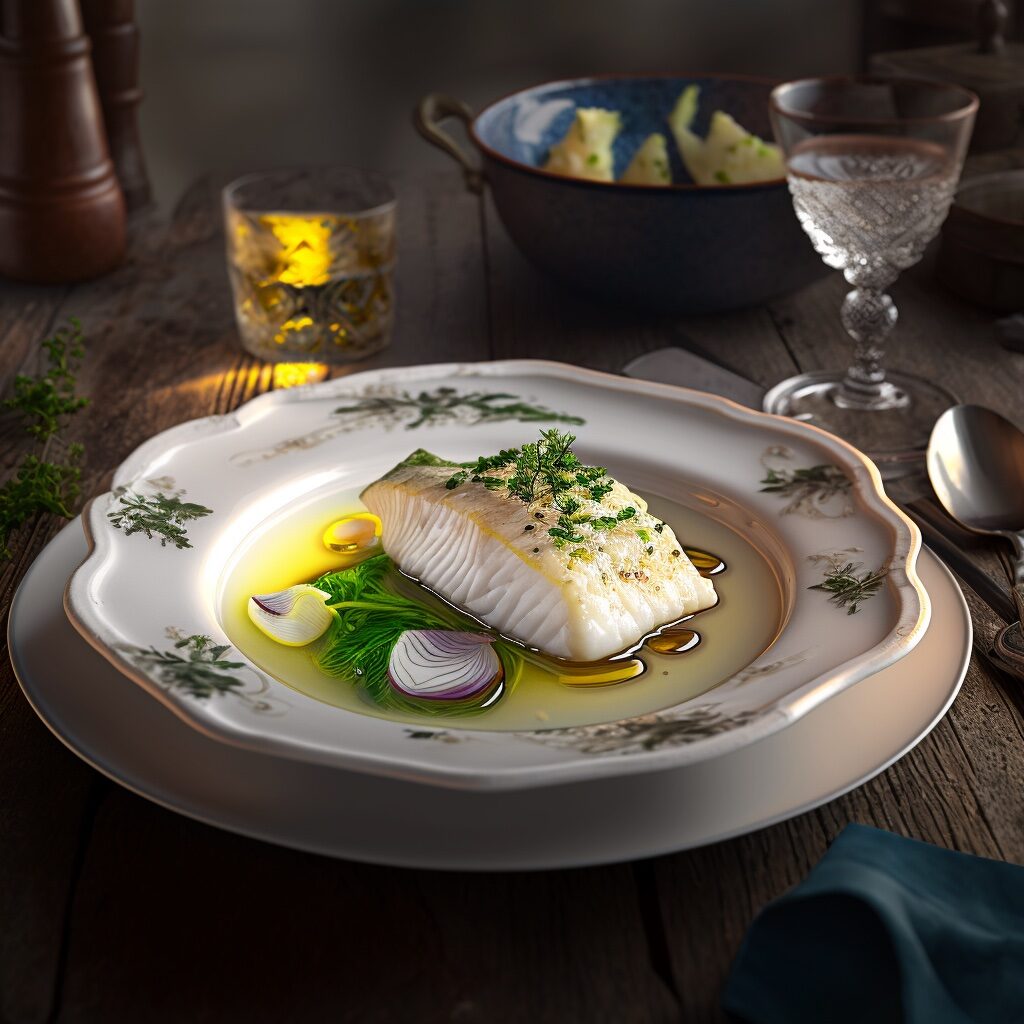
Fish Filets Poached in White Wine is a dish steeped in the rich history of French cuisine. It’s a classic example of the country’s love for simple yet elegant dishes that let the fresh flavors of the ingredients shine through. This dish is a testament to the art of French cooking and its emphasis on the harmony of flavors, where each component works in tandem to create a symphony of taste on the palate.
When preparing this dish, the delicate white wine is carefully selected to complement the mild flavor of the fish. The wine is carefully infused with the sweetness of fresh lemon, the pungent aroma of garlic, and the earthy essence of thyme, creating a broth that is both light and flavorful. As the fish poaches in this aromatic bath, it takes on the essence of the wine and other ingredients, becoming infused with their flavors and aromas.
The dish is then plated with the care and attention to detail that only a master chef could impart. The tender, flaky fish is nestled on a bed of the fragrant broth, surrounded by the bright, juicy lemon slices, and dotted with flecks of fresh parsley. The result is a visually stunning and delicious dish that is both rustic and sophisticated.
Let’s get to it!
serves 4
Ingredients:
- 4 white fish fillets (such as cod or halibut)
- 1 cup of dry white wine
- 1 lemon, sliced
- 4 cloves of garlic, minced
- 1 small onion, diced
- 2 sprigs of thyme
- Salt and pepper to taste
- 2 tbsp olive oil
- Fresh parsley, chopped (optional, for garnish)
Equipment:
- 4 pieces of aluminum foil, large enough to wrap the fish fillets
- A large skillet or sauté pan
- A large baking dish
Plating Ideas:
- Carefully remove the fish fillets from their foil packets and place them on a serving platter.
- Spoon the cooking liquid from the packets over the fish.
- Garnish with freshly chopped parsley and extra lemon slices, if desired.
Instructions:
- Preheat your oven to 375°F.
- In a skillet over medium heat, add the olive oil and sauté the onion and garlic until softened and fragrant (about 3-5 minutes).
- Remove the skillet from heat and let it cool.
- Wrap each fish fillet in a piece of aluminum foil and place them in a large baking dish.
- Spoon the cooked onion and garlic mixture over the fish fillets.
- Add a slice of lemon and a sprig of thyme to each packet.
- Pour the white wine into the baking dish, making sure not to pour it directly over the fish fillets (you don’t want to wash away the flavorings).
- Sprinkle salt and pepper to taste.
- Place the baking dish in the oven and bake for 15-20 minutes, or until the fish is opaque and easily flaked with a fork.
An example of a modern chef preparing Fish Filets Poached in White Wine.
Fish Filets Poached in White Wine is a dish that embodies the essence of French cuisine.
It’s a celebration of the country’s love for fresh ingredients, its passion for simple yet elegant cooking techniques, and its commitment to the art of food.
When savoring this dish, one can taste the romance of the French countryside and the culinary heritage of one of the world’s great cuisines.
Bon appétit!

Poached Eggs al a Françoise
Eggs. Sure– we’ve all had ’em. But French Poached Eggs?
Now we’re on a one-way roux to nouveaux egg town.
Here’s the recipe you’ll want to follow to get that delicious French poached egg taste, with only a little of the backbreaking sweaty labor that comes from about a decade of being yelled at while you learn to cook.
You are welcome!
Oeufs pochés
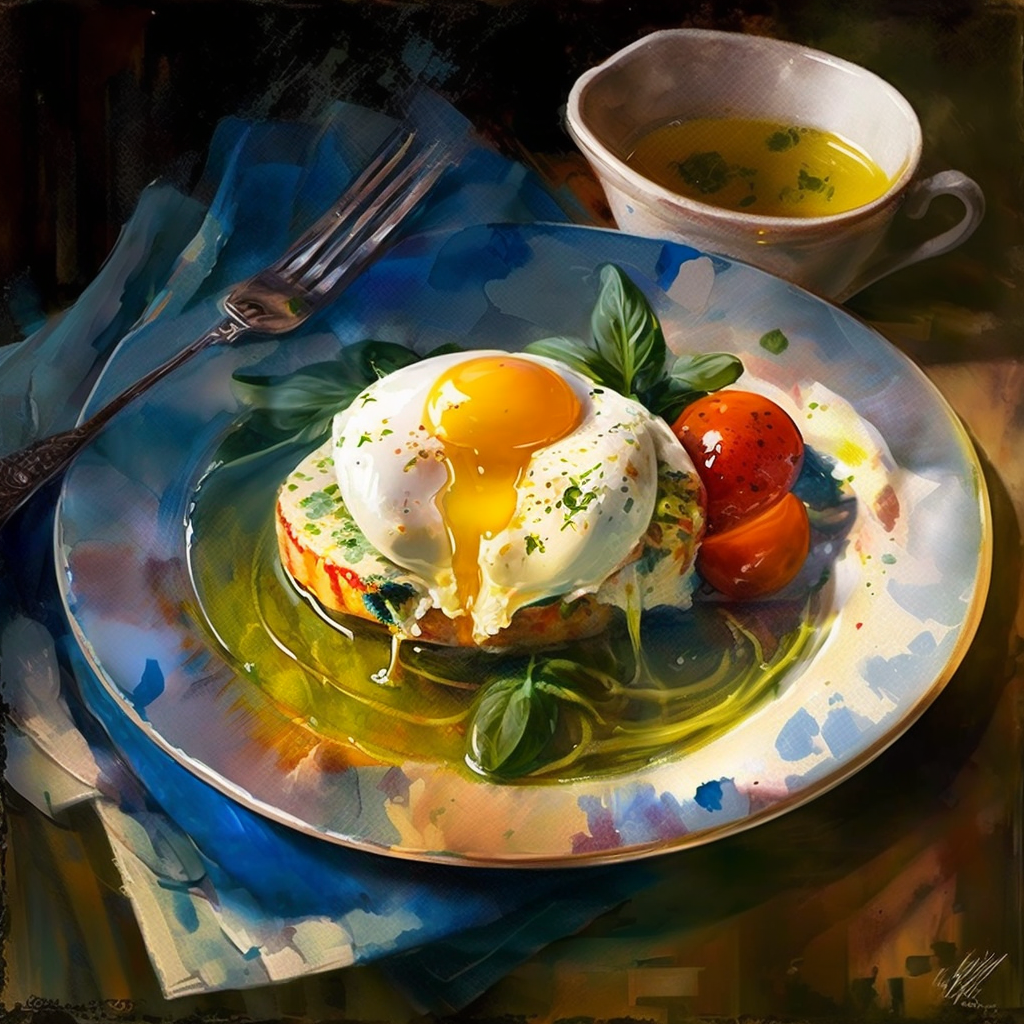
Poached eggs, or “oeufs pochés” in French, have been a popular dish in French cuisine for centuries.
This technique of poaching eggs is one that you’ll want to master ASAP.
It truly being a classic French cooking method that is used in many traditional French dishes, such as eggs Benedict or eggs Florentine, you’ll truly want this technique in your repertoire.
When cooking poached eggs, precision and consistency are key.
Ready?
Here’s the equipment you’ll want on hand when preparing your first Poached Eggs French style:
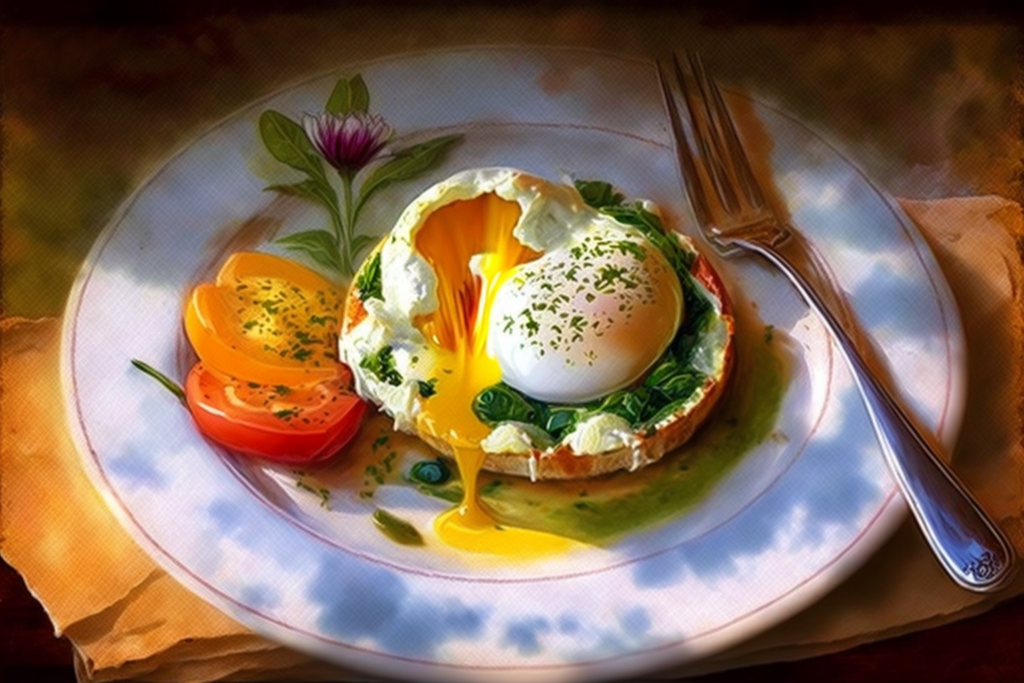
- A medium saucepan or a wide, shallow pan for poaching the eggs.
- A slotted spoon for gently sliding the eggs into the water and removing them from the pan.
- A paper towel to drain the eggs after cooking.
- Small bowls or ramekins to crack the eggs into before poaching.
- A thermometer to check the temperature of the water, optional but recommended.
Additionally, it’s also helpful to have a timer or a clock to keep track of the cooking time, as well as a colander or a strainer, to remove any stray egg whites or debris from the poaching water.
Overall, having the right equipment is important to make perfect poached eggs, as it allows you to control the temperature, timing, and handling of the eggs, which are crucial for achieving the desired texture and consistency.
Now for the recipe for traditional French-style poached eggs that is sufficient for two people :
Ingredients:
- 4 large, fresh eggs
- 2 tablespoons of white vinegar
- Salt and pepper, to taste
Preparation and Cooking Instructions:
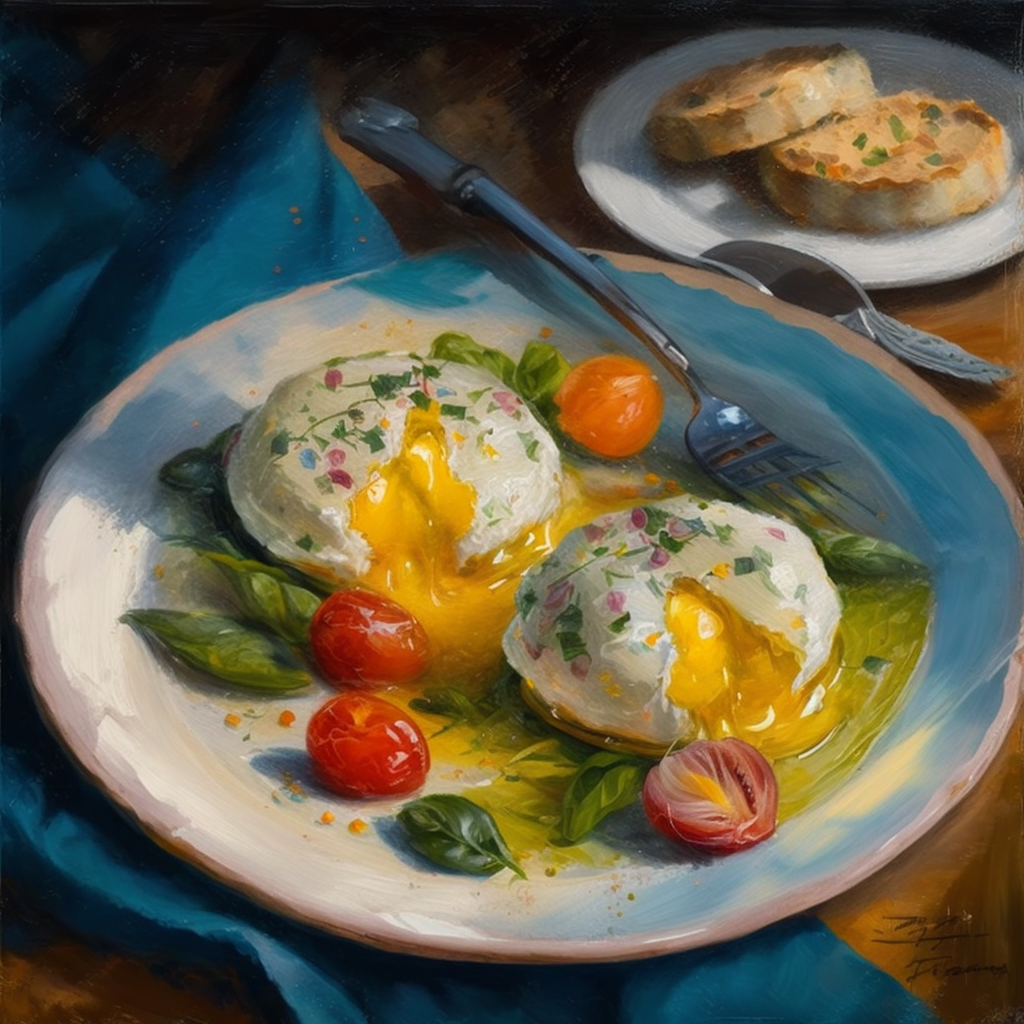
- Fill a medium saucepan with water and bring it to a gentle simmer (around 160-180°F or 70-80°C)
- Stir in the vinegar and a pinch of salt.
- Crack each egg into a small bowl or ramekin.
- Use a slotted spoon to create a gentle whirlpool in the simmering water.
- Gently slide the eggs into the water, one at a time.
- Cook the eggs for 3-4 minutes, or until the whites are set and the yolks are still runny.
- Use a slotted spoon to remove the eggs from the water and place them on a paper towel to drain off any excess water.
- Season the eggs with salt and pepper.
Plating Suggestions:
- Serve the poached eggs on top of buttered toast or an English muffin, for a classic dish called “Eggs Benedict”.
- Serve the poached eggs on top of a bed of wilted spinach or sautéed mushrooms, for a more savory dish.
- You could also serve them on top of a salad or with a side of crispy bacon and a sprinkle of fresh herbs.
Serving Size Suggestions:
- Serve one poached egg per person as a starter or two per person as a main dish.
Ready to take your Poached Eggs to the next level?
In order to achieve the perfect poached egg, hone in like a hawk to the temperature of the water, the cook times, and egg freshness.
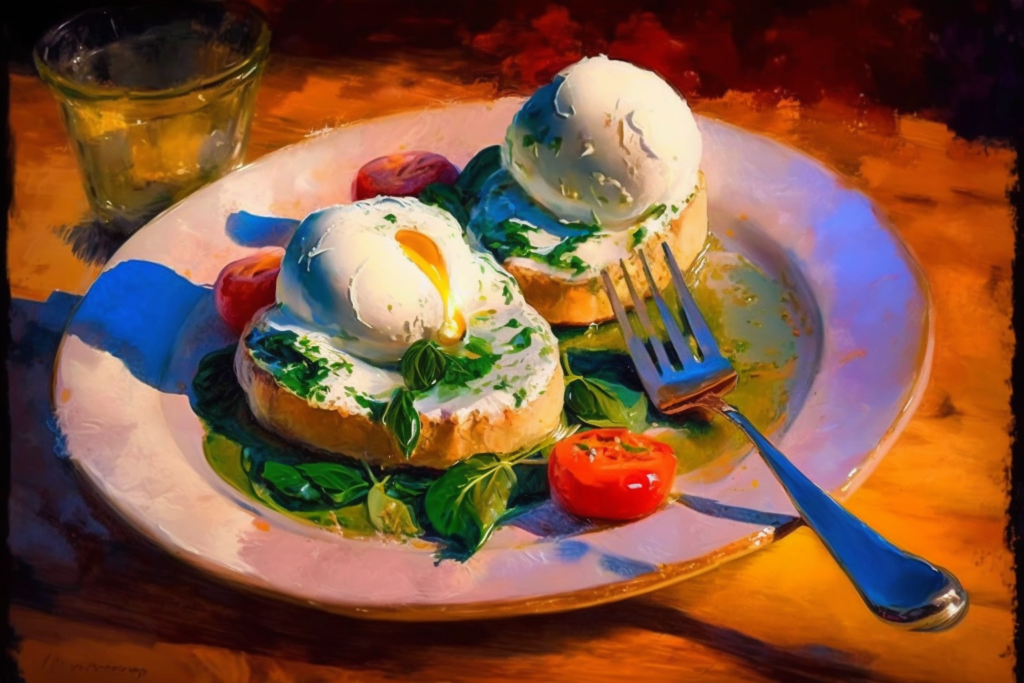
Water always kept at a gentle simmer, around 160-180°F (70-80°C), and the eggs should be as fresh as possible.
Another key factor to consider is the vinegar, which is often added to the water to help the egg whites coagulate more quickly. However, the amount of vinegar used should be kept to a minimum, as too much can overpower the delicate flavor of the egg.
It’s also important to note that the eggs should be gently placed into the water using a slotted spoon or similar utensil, this will help the eggs cook evenly, and prevent them from breaking apart.
Hey! Poached eggs are best served immediately after cooking, as they tend to lose their shape and texture if left to sit for too long.
Chef Randal
Poached Eggs French Style Histoire Corner
Have you ever heard the story of French chef, Marie-Antoine Carême?
The male chef Marie-Antoine has gone down in history books as a founding father of French haute cuisine.
Carême was known for his precision and attention to detail in the kitchen, and he is credited with popularizing the technique of poaching eggs. He often served poached eggs as a starter or as part of a more elaborate dish, and he is said to have been able to poach dozens of eggs at a time to perfection.
Poached eggs are also a popular dish in French bistros and brasseries, where they are often served as a simple, yet satisfying dish for breakfast or brunch. The dish is simple, but it requires a high level of skill and attention to detail to execute perfectly, which is why it’s considered a classic French dish.
In French culture, the dish is often considered a symbol of simplicity, elegance, and refinement. Poached eggs are often served in high-end restaurants, but they can also be found in simple bistros and brasseries, making it a versatile dish that can be enjoyed by all.
Overall, poached eggs have a long history in French culture, and are considered a classic French dish that symbolizes simplicity, elegance and refinement.

What is Flambéing?
Flambéing is an elegant and dramatic cooking technique that adds depth and complexity to dishes. Simply put, it involves igniting alcohol, such as brandy or rum, and spooning the flaming liquid over a dish to add a rich, caramelized flavor.
It is an art form that in itself requires precision, control, and a careful hand.
One must have a good understanding of the properties of heat, flame, and alcohol to execute this technique perfectly.
To master flambéing will absolutely take your dishes to the next level, elevating them from simple to stunning.
And, when executed correctly, it can be a visually stunning experience for your guests.
Definitely always keep safety in mind when flambéing.
With time, practice, and patience, you too can master this incredible technique.
Here is a good instructional intro video on Flambéing courtesy of the Chef Majik YouTube Channel.
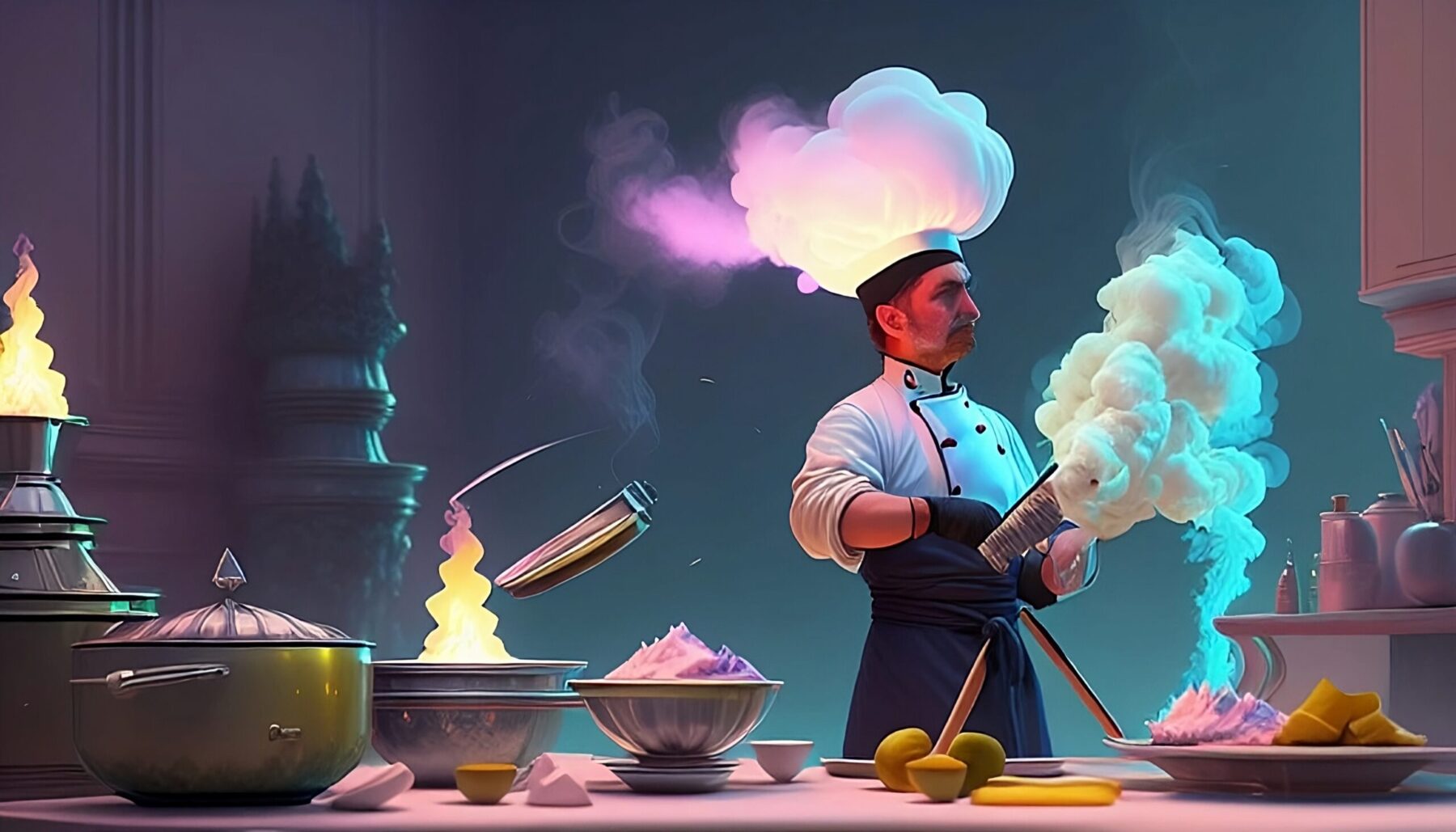
What is Molecular Gastronomy and should you care?
Today, our goal is to get to the bottom of the Molecular gastronomy trend; to decipher fact from fiction, rumor from truth and above all else– to give you, the reader, a guess as to whether this might be some new type of culinary pursuit you may wish to investigate, sample, share and enjoy.
Let’s get to it.
What is Molecular Gastronomy?

In a flambéed nutshell, Molecular gastronomy is a type of cooking that uses scientific techniques and equipment to manipulate the physical and chemical properties of food, with the goal of creating new and interesting flavors, textures, and presentations. This can include things like using liquid nitrogen to freeze food quickly, creating foams and gels, and using sous vide cooking to achieve precise temperature control. It’s often associated with high-end, experimental cuisine.
To dig a little deeper, here are some of the specific trends that are unfolding in the molecular gastro space:
- Spherification: A technique where a liquid mixture is made into small spheres that mimic the texture of caviar or tapioca pearls.
- Foam: Creating foam or mousse-like textures by whipping ingredients and using stabilizers like lecithin.
- Sous vide cooking: A method of cooking food in vacuum-sealed bags at low and precise temperatures for extended periods of time.
- Smoking: Incorporating smoky flavors using smoke guns, liquid smoke or smoke infusion
- Low-Temperature Cooking: Using precise temperature control to cook food at low temperatures, resulting in tender and flavorful meats and vegetables.
These all do sound rather new and exciting, or at the very least, something old brought back in a new way.
If one were interested in finding such an experience, where would one want to go?
Popular Molecular Gastronomy Restaurants & Chefs, worldwide
Here are some of the most renowned French Molecular Gastronomy experiences that you will find, by country. Bon appetit!

Denmark
Perhaps the Danes weren’t who one might first think of when conjuring destinations to add to a “Must visit gastro spots” list, but it’s on there with this entry.
Noma
A two-Michelin-starred restaurant located in Copenhagen, Denmark, run by chef René Redzepi. The restaurant is known for its Nordic cuisine, which emphasizes locally-sourced and foraged ingredients.
Unfortunately for fans, Noma is slated to close by 2024 and re-open as a test kitchen. All the best to the team at Noma for their future success!
England
A visit to the UK would not be complete without some culinary exploration. If Molecular Gastronomy is your fare of choice, then here are some stops near to England that will satisfy any gastro lover.
The Fat Duck
This Michelin Three Star restaurant in Bray, Berkshire, England is run by chef Heston Blumenthal.
Known for its unique and experimental dishes, this is one stop that any gastro fan must attempt to make.
The Ledbury
Brett Graham is the capable chef at the helm of this Michelin two-star establishment.
Known for its contemporary French-inspired cuisine, with a focus on high-quality, seasonal ingredients, The Ledbury is a fine gastronomical stop in the Notting Hill area.

France
Of course, any molecular gastronomy list would be lacking were it not adorned with the name of the country that started it all, that country being France.
Molecular Gastronomy got its start in the French motherland and some of its most delectable samplings can still be enjoyed there. Here are but a few choice ones.

Le Jules Verne
All the best modern food, located in an artifact of Antiquity. You have to think about how great it would be to eat Michelin-star level food on the second floor of the Eiffel Tower. For some of us, the question is too much to bear, thus leaving us no other choice but to investigate it first-hand.
Chef Alain Ducasse runs Le Jules Verne and has created a name for his dishes to be fine examples of contemporary French cuisine with a focus on seasonal, high-quality ingredients.
Septime
A Michelin-starred restaurant located in Paris, run by chef Bertrand Grébaut.
Surrounded by all that Paris has to offer along with quaint Inns, where local homemade wines are served and sold, you’ll definitely enjoy Septime and its surrounding haunts.
L’Astrance

Three Michelin stars. This Parisian restaurant is run by chef Pascal Barbot.
Expect contemporary French cuisine redefined.
Barbot has stated his aim to create a journey for those who dine, and to welcome all with extensive hospitality.
Mirazur
A three-Michelin-starred restaurant located in Menton, France, run by chef Mauro Colagreco. The restaurant is known for its Mediterranean cuisine with a focus on fresh, locally-sourced ingredients.
L’Arpege
A three-Michelin-starred restaurant located in Paris, run by chef Alain Passard, known for his avant-garde approach to French cuisine, with a focus on vegetables and sourcing the best ingredients.
David Toutain
A Michelin-starred restaurant located in Paris, run by chef David Toutain, known for his contemporary French cuisine with a focus on precision and technique, with a touch of molecular gastronomy.
Certainly not an exhaustive list, this one will get you started down the path to some truly incredible flavor profiles.
Let us know in the comments, or at info@finefrenchdining.com how these establishments rated in your own personal opinions. If you do, we might even publish it on our site, of course with your permission.
Italy
Everybody whose ever held a whisk or sampled a pâté can tell you, the Italians and the French share quite a bit of culinary background. So, to you all, it should come as absolutely no surprise what-so-ever that you’ll find some good French gastro dining in the country of Italy.
Osteria Francescana
Three Michelin stars make this restaurant in Modena, Italy, run by chef Massimo Bottura a very notable gastro destination. It is known for its creative and playful approach to traditional Italian cuisine.
Spain
Certainly a notable stop on a worldwide French culinary tour is the country of Spain. Here are some notable gastronomy destinations in the Spanish homeland.
El Bulli
Located in Catalonia, Spain, El Bulli was considered one of the world’s most innovative and influential restaurants, known for its cutting-edge molecular gastronomy techniques. Chef Ferran Adrià was the head chef and main creator of the menu.
Mugaritz
A two-Michelin-starred restaurant located in San Sebastián, Spain, run by chef Andoni Luis Aduriz, who is known for his avant-garde and unconventional approach to cooking.
Arzak
A three-Michelin-starred restaurant located in San Sebastián, Spain, run by Juan Mari Arzak and his daughter Elena Arzak, who are known for their avant-garde and unconventional approach to traditional Basque cuisine.
USA
America has every kind of food, and most of it you’ll have to visit the big cities to enjoy. That is no exception when it comes to molecular gastronomy dining options in the USA. Most of them you will find in NYC.
Alinea
Alinea is a three-Michelin-starred restaurant in Chicago, Illinois, run by chef Grant Achatz. The restaurant is known for its innovative and visually stunning dishes.
Per Se
A three-Michelin-starred restaurant in New York City, run by chef Thomas Keller. The restaurant is known for its contemporary French cuisine, with a focus on high-quality ingredients and precise techniques.
Eleven Madison Park
A three-Michelin-starred restaurant in New York City, run by chef Daniel Humm. The restaurant is known for its contemporary American cuisine, with a focus on seasonal and locally-sourced ingredients.
But should I try it?
You have to ask yourself if you’re bored of the same tastes that you’ve been enjoying throughout your entire life. Are you ready to introduce your tastebuds to something truly new? Well, those foods are out there, even if a bit off the beaten path, requiring sometimes a plane or train ticket and a couple lorries to get to. Will you try some French molecular gastronomy dishes this year? Let us know if you do, where you had it, and what you thought!
Stay tuned for part two of this article, where we will highlight some trending French molecular gastronomy dishes that are easy enough to make at home, and some that don’t even require having a chemistry set on hand!
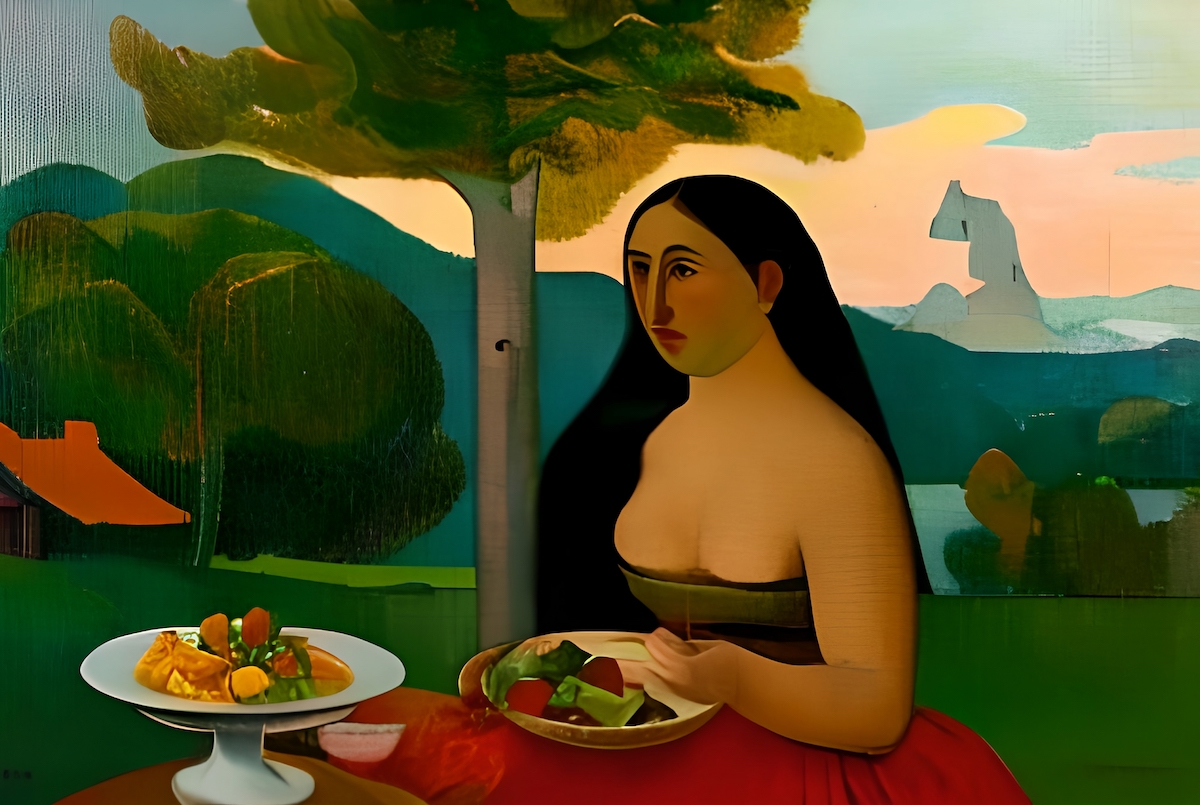
Gnocchis à la Alsacienne
Gnocchi is not considered a traditional French dish, it’s more of an Italian fare.
However, in the Alsace region of Northeastern France, where the dish is known as “Gnocchis à la Alsacienne” — That is where the dish is rather popular.
Now, we’ll explore that popular French preparation of the traditional Italian dish, Gnocchi.
Serving Size Suggestion: This recipe should make about 4 servings.
Ingredients:
- 2 cups flour
- 4 eggs
- 1/2 cup grated Gruyere cheese
- Salt and pepper to taste
- 1/4 cup chopped fresh parsley (optional)
- 1/2 cup cream
- 2 cloves of garlic, minced
- 2 cups of diced bacon or lardons
- 1 cup of diced onions
- 1 cup of diced mushrooms
- 1/4 cup of white wine
- 1/4 cup of grated Parmesan cheese
Equipment:
- Mixing bowl
- Whisk or fork
- Rolling pin
- Gnocchi board or fork
- Pot for boiling water
- Slotted spoon
- Plate or serving dish
- Large skillet or pan


Instructions:
- In a mixing bowl, combine the flour, eggs, Gruyere cheese, salt, pepper, and parsley (if using). Mix until a dough forms.
- Knead the dough on a floured surface for a few minutes until smooth.
- Roll the dough into long, thin ropes, about 1/2 inch thick.
- Use a gnocchi board or fork to create grooves on one side of each rope.
- Cut the ropes into small pillows, about 1 inch long.
- Bring a pot of salted water to a boil.
- Gently add the gnocchi to the boiling water and cook for 2-3 minutes or until they float to the surface.
- Use a slotted spoon to remove the gnocchi from the water and transfer them to a plate or serving dish.
- In a large skillet or pan, sauté the bacon or lardons over medium heat until crispy.
- Add the onions and garlic to the skillet and sauté until translucent.
- Add the mushrooms and sauté for an additional 2-3 minutes.
- Deglaze the pan with white wine and stir in the cream.
- Add the cooked gnocchi to the skillet and toss to coat with the sauce.
- Cook for an additional 2-3 minutes or until the sauce thickens.
- Remove from heat and sprinkle with grated Parmesan cheese.


Plating Ideas:
- Serve the gnocchi in a bowl and top with the sauce, bacon, and grated Parmesan cheese.
- Garnish with fresh herbs or chopped parsley.
- Serve with a salad or vegetables on the side.
Gnocchi itself has a long history and it is believed to have originated in ancient Rome, where it was made with semolina flour and water.
Over time, the recipe has evolved and different variations have been created, such as potato gnocchi which is more common in Italy, and those made with flour and eggs, which are more common in France.
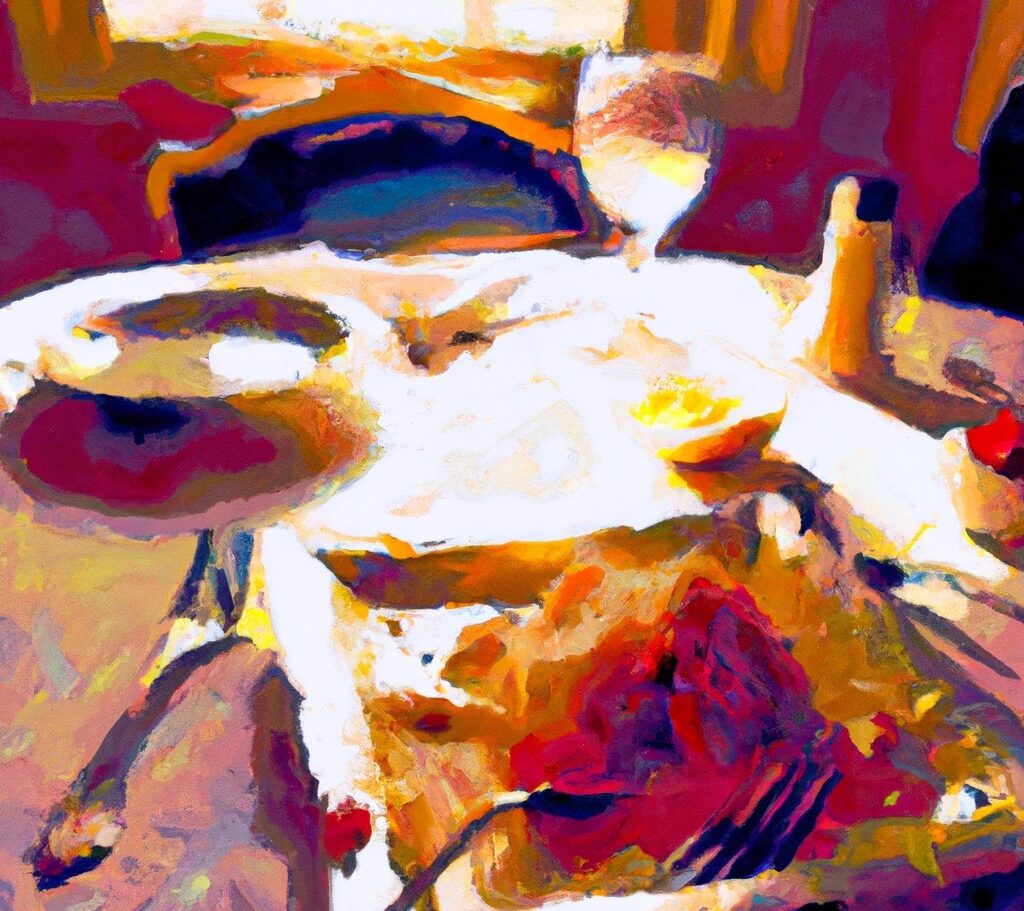
Quenelles de brochet à la Nantua
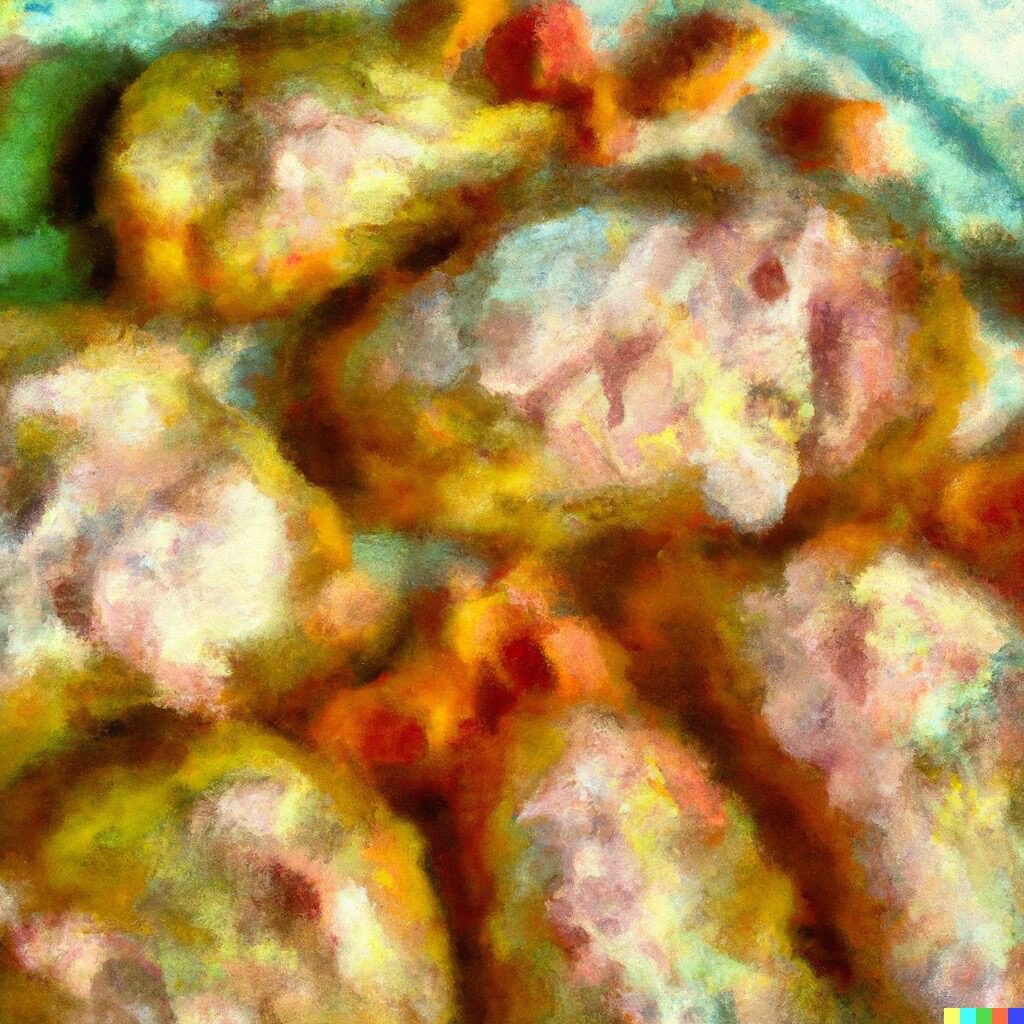
Upon detailing the account of Chef Adolphe Dugléré and his coming to create this legendary variation of the famous French Quenelles, it occurred that we ought to include the recipe as well.
A word to the wise: While you need not know the history behind the dish, proceed with caution making these Quenelles if this is your first time trying Quenelles of any type.
The preparation of the lobster or crayfish sauce can add a layer of complexity beyond the zone of comfort for many apprentice chefs.
If you’re ready to take on this intermediate skill-level dish, read on!
This classic French dish is made with pike, quenelles, and a rich lobster sauce.
This recipe makes about 4-6 servings.
Ingredients:
For the Quenelles:
-1 lb pike or other white fish
-1 egg
-1/4 cup heavy cream
-1/4 cup milk
-1/4 cup grated Parmesan cheese
-1 tsp salt
-1/4 tsp ground nutmeg
-1/4 tsp white pepper
-1/4 cup all-purpose flour
-1/4 cup butter
For the Lobster Sauce:
-1 cup fish stock or seafood broth
-1/2 cup dry white wine
-1/2 cup heavy cream
-1/4 cup tomato paste
-1 tbsp flour
-1 tbsp butter
-1/4 tsp salt
-1/4 tsp white pepper
-1/4 tsp paprika
-1/4 cup diced cooked lobster meat
-1 tbsp chopped fresh parsley or chives, for garnish
Equipment:
– A food processor or meat grinder
–Spoon or spatula
-Saucepan
-Slotted spoon
-Baking sheet
-Parchment paper
-Mixing bowl

Cooking Instructions:
- In a mixing bowl, combine the fish, egg, cream, milk, Parmesan cheese, salt, nutmeg, and white pepper. Mix well.
- Using a food processor or meat grinder, process the mixture until it is smooth and well combined.
- Shape the mixture into oval-shaped quenelles using a spoon or spatula.
- Place the quenelles on a baking sheet lined with parchment paper and refrigerate for at least 30 minutes to firm up.
- Heat the butter in a saucepan over medium heat until it is hot but not browned.
- Roll the quenelles in flour, then gently lower them into the hot butter.
- Cook the quenelles for about 2-3 minutes per side, or until they are golden brown and cooked through.
- Remove the quenelles from the pan using a slotted spoon and drain them on a paper towel-lined plate.
For the Lobster Sauce:
- In a saucepan, bring the fish stock or seafood broth, white wine, heavy cream, tomato paste, flour, butter, salt, white pepper, and paprika to a boil.
- Reduce the heat and simmer for about 5 minutes, or until the sauce thickens.
- Stir in the diced cooked lobster meat and heat through.
- Spoon the sauce over the quenelles.
- Garnish with chopped parsley or chives.
Plating Ideas: Try serving the quenelles on a bed of sautéed spinach or Swiss chard. Another idea is to try serving them with a side of crusty bread or boiled potatoes.
Note: The recipe is a bit complex as it involves making quenelles as well as lobster sauce. You can also use pre-made quenelles and make the sauce separately. Also, make sure to use fresh fish and lobster meat for the best taste.

Adolphe Dugléré and the Creation of Quenelles de brochet à la Nantua.
In the early 19th century, a famous chef named Adolphe Dugléré came up with a new version of quenelles. These new Quenelles became very popular.
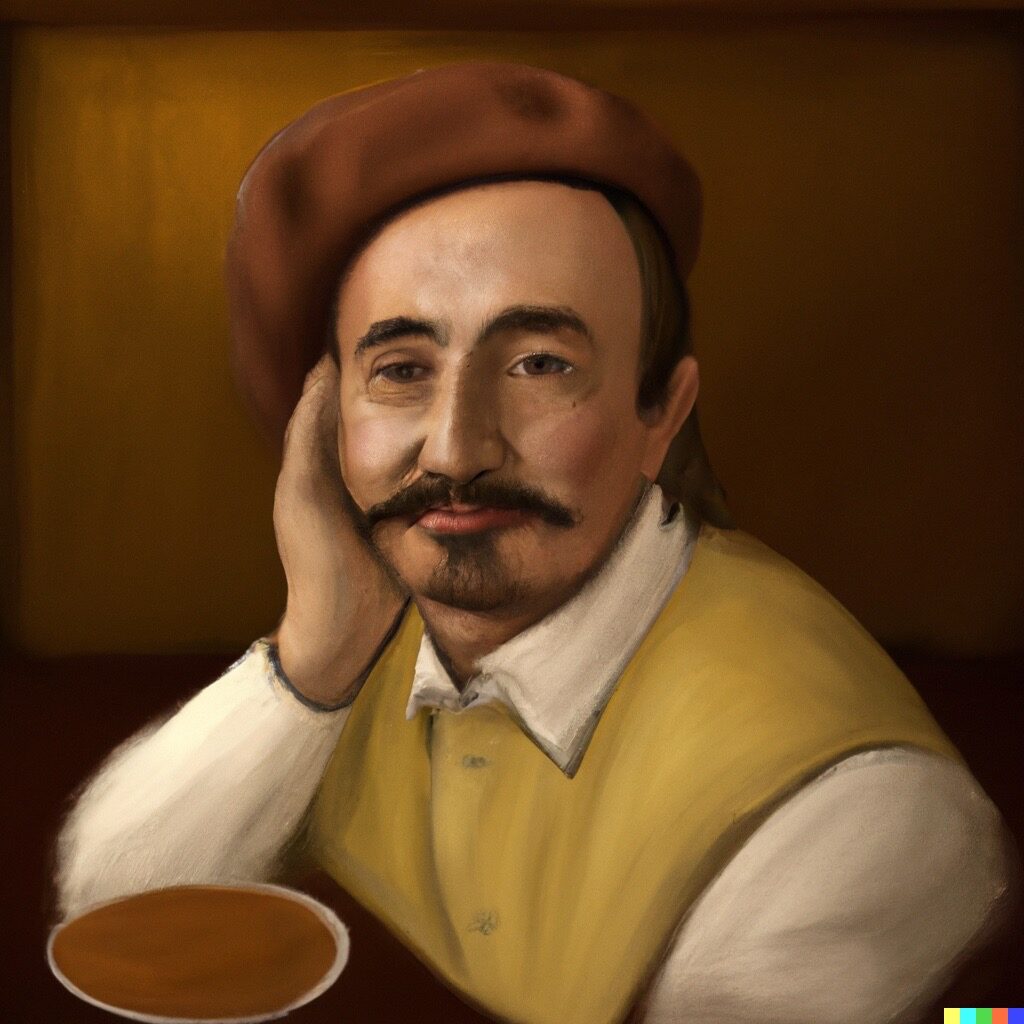
Adolphe was born in the early 1820s in the city of Lyon. It was here that Dugléré began his culinary career at a very young age, working in various restaurants and hotels around the city.
He eventually made his way to Paris, where he worked in some of the city’s most prestigious restaurants, including the Café Anglais, where he served as head chef for many years.
Upon Dugléré’s taking his new position at Café Anglais in Paris, he found himself with the ability to imagine, conjure, and serve various takes on French culinary classics.
It was on one such flurry of creative culinary force that it occurred to him to take some Quenelles and finish them in his own well-honed lobster sauce.
Suffice it to say the customers raved about it. This dish, known as Quenelles de Brochet à la Nantua, went on to become a classic French dish in its own right and is still served in many restaurants today.

In modern times, some menus will include this dish but are prepared with a crayfish sauce finish rather than lobster, perhaps depending on seasonal availability. For anyone familiar with both, they’re essentially the same creature anatomically, just that Lobsters far outweigh Crayfish.
Quite simply, the innovation was thus:
Take traditional Quenelles of Lyon, which were made with a mixture of ground fish, and embellish them with a rich lobster sauce. That slight remix of the original style made a rather unexpected impact.

Dugléré’s creation of Quenelles de brochet à la Nantua cemented his legacy in French cuisine and culture. He is remembered as one of the great French chefs of the 19th century, and his dish is still considered a classic in French cuisine.
There is a camp that disputes Dugléré’s authorship of the recipe. This crowd says that the Quenelles recipe was instead created by a chef named Jean-Baptiste LaGrand in the 19th century, at the famous restaurant “La Mère Fillioux.”
While it is in the town of Nantua, in the eastern part of France, which is where the dish gets its name, there does seem to be this conflicting account of who actually prepared the dish originally.
In the meantime, while the historians are honing in on the finer details, we can all give them a taste and give the dish a try, preparing it.
Let us know in the comments if you try preparing it and what you thought of it once you tasted it.
Click here to get our recipe for Quenelles with Nantua Sauce.

Sartu di Riso
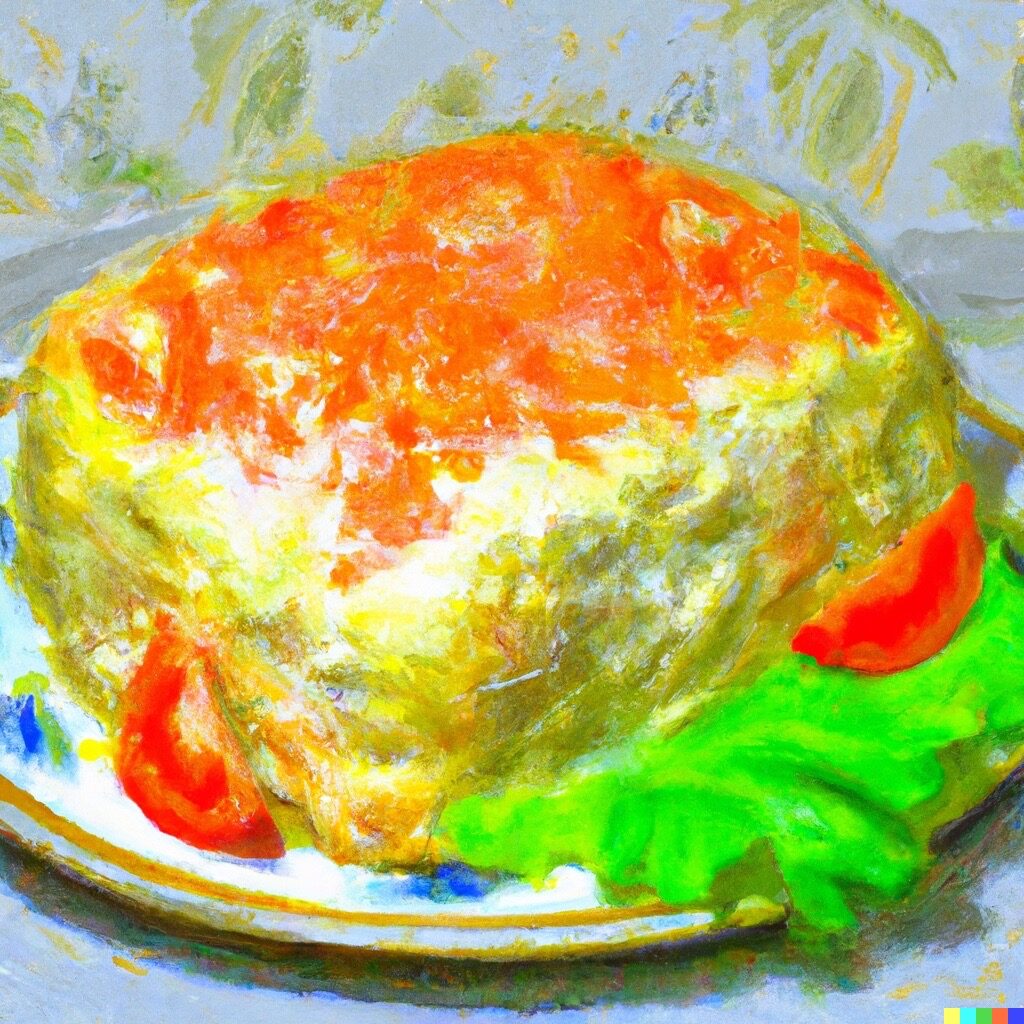
Also known as “Timballo di Riso,” Sartu di Riso is a traditional Neapolitan dish that typically consists of a dome-shaped timbale of rice, meat, cheese, and vegetables.
Generally, it is baked and served as a main course.
It’s a dish that is perfect for special occasions and for family gatherings and it’s often prepared for Christmas, Easter, and other holidays.
Besides all this, it’s a fantastic date nite dish because it’s relatively easy to cook, it’s relatively unknown and that alone will give you that level of mystique and mystery to your date who is wondering where on Earth you learned to make such an eye-catching, tasty, and surprisingly savory dish that looks almost like a cake.
Equipment to have on hand :
- Large skillet or sauté pan with a lid: This will be used to cook the pancetta or bacon, vegetables, and rice.
- Ladle: This will be used to add the chicken stock to the skillet.
- Wooden spoon: This will be used to stir the ingredients in the skillet.
- Measuring cups and spoons: These will be used to measure the ingredients.
- Grater: This will be used to grate the Parmesan cheese.
- Cutting board and sharp knife: This will be used to chop the vegetables and pancetta or bacon.
- Serving bowls: These will be used to serve the risotto.
- A Timer to keep track of the cooking time.
Spruce up the scene
With these tools, you will be able to prepare the traditional French recipe for Sartu di Riso with ease and precision. Remember to also have a taste as you cook and adjust the seasoning as needed.
Ingredients:

- 1 1/2 cups Arborio Rice
- 3 cups Chicken Stock
- 1/2 cup White Wine
- 1/4 cup grated Parmesan Cheese
- 2 tablespoons unsalted Butter
- 1/4 cup diced Pancetta or bacon
- 1/4 cup diced Onion
- 1/4 cup diced Carrots
- 1/4 cup diced Celery
- Salt and Pepper to taste
- 1/4 cup chopped Parsley
<3
Directions:
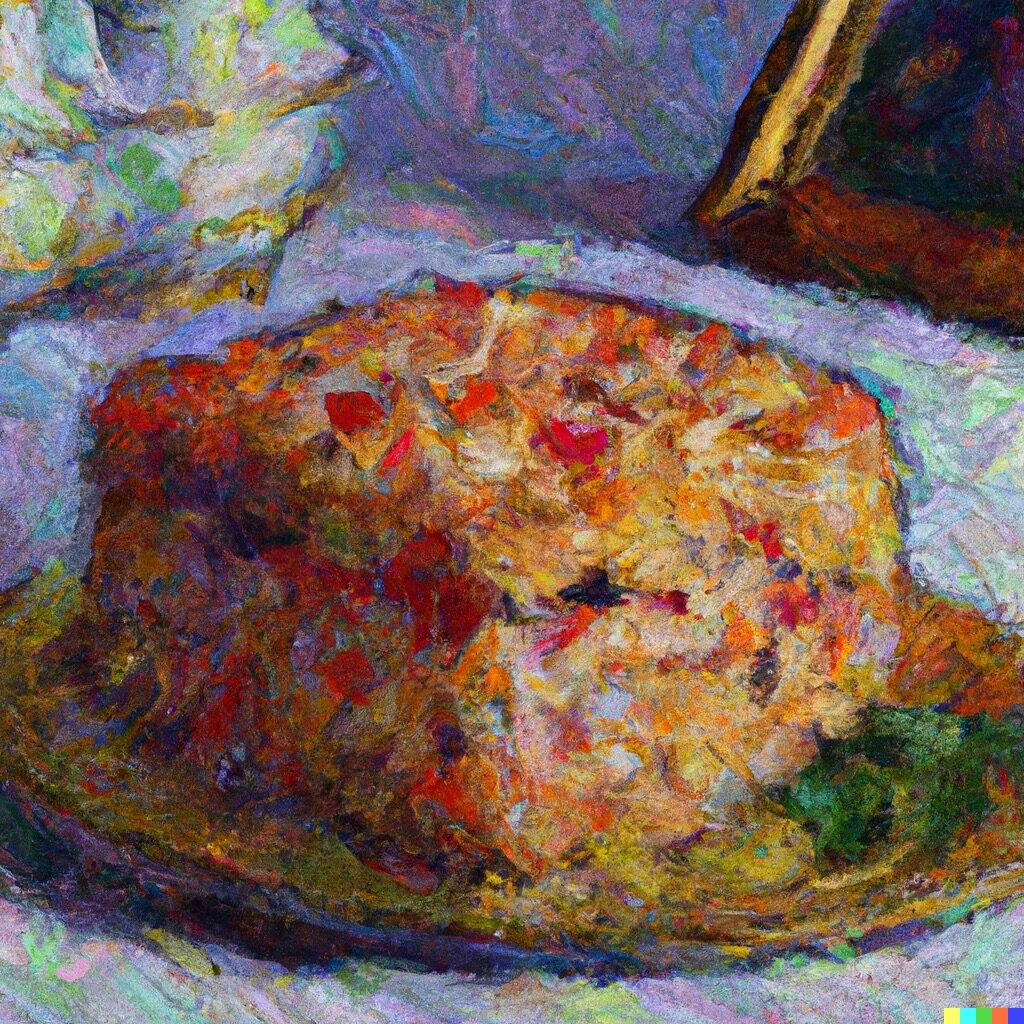
- In a large skillet, cook the pancetta or bacon over medium heat until crispy. Remove with a slotted spoon and set aside.
- Add the onion, carrots, and celery to the skillet and cook until softened.
- Add the rice to the skillet and stir to coat in the bacon fat. Cook for 2-3 minutes, until the rice, is slightly toasted.
- Add the white wine and stir until the wine has been absorbed.
- Slowly add the chicken stock, one ladle at a time, stirring constantly. Cook until the liquid has been absorbed before adding the next ladle.
- Continue cooking the rice until it is tender and creamy, about 20-25 minutes total.
- Stir in the parmesan cheese and butter, and season with salt and pepper to taste.
- Serve the risotto in bowls, garnished with the chopped parsley and reserved pancetta or bacon.
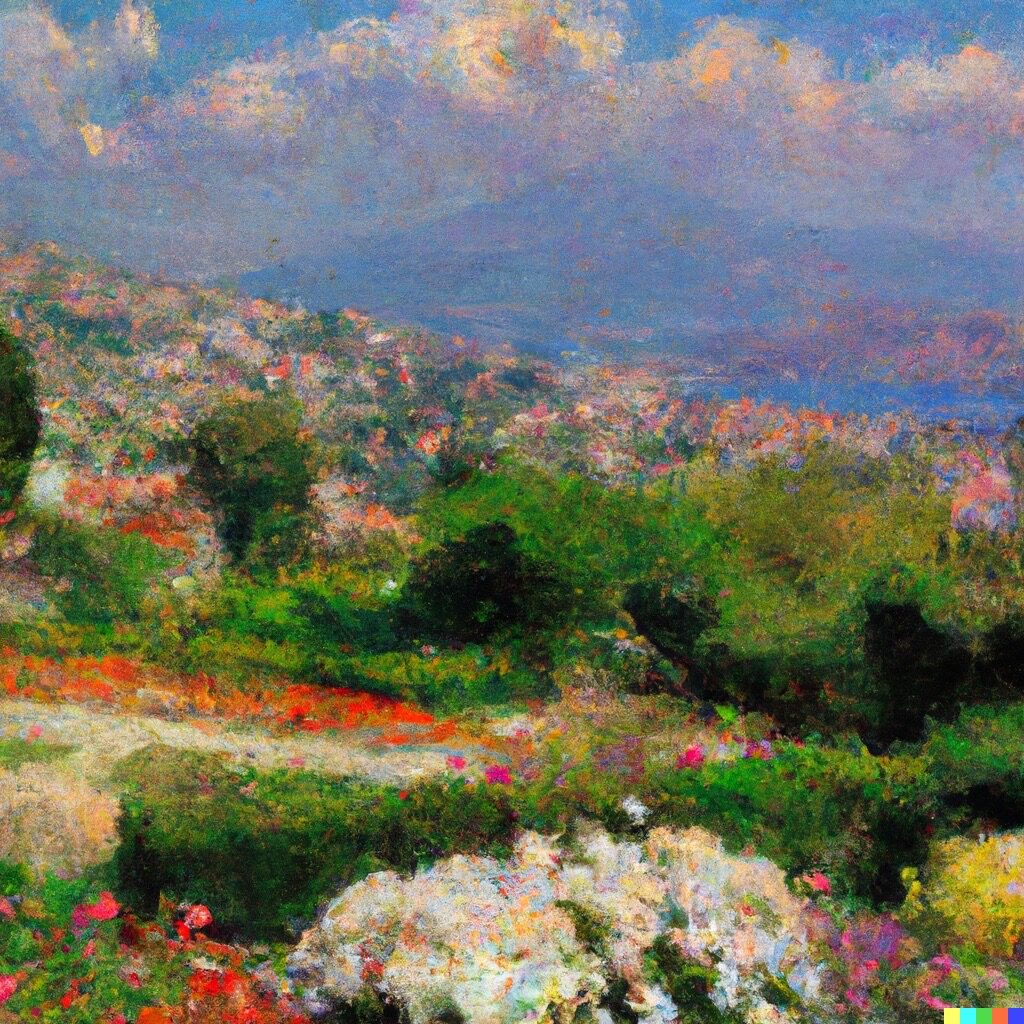
This traditional French recipe for Sartu di Riso is a perfect showcase of the rich culinary heritage of France. The dish is hearty and comforting, with a creamy texture and the perfect balance of flavors. The pancetta or bacon adds a smoky and salty component, while the vegetables add sweetness and a touch of freshness. The parmesan cheese and butter add creaminess and depth of flavor.
<3
<3
<3
Sartu di Riso, a king’s dish
Aromatics and rice, a pretty mix
Crispy Pancetta, fresh vegetables
A feast for the eyes, for the palate
A culinary delight, to be savored slowly
A traditional recipe, prepared with love and skill.

The Time French President Charles de Gaulle Snubbed the Germans Over Food.

In the summer of 1960, French President Charles de Gaulle was on a state visit to Germany.
The visit was seen as an important step in improving relations between the two countries, which had a long and complicated history. As the leader of France, de Gaulle was greeted with great fanfare and treated to a formal state dinner in his honor.
As the dinner began, the guests were served a fancy and elaborate German dish, but to the surprise of the hosts, de Gaulle refused to eat it.

Instead, he asked for a slice of his favorite savory dish, Quiche aux Poireaux. The request caught the German hosts off guard, and they scrambled to find a way to fulfill the President’s request.
The story of de Gaulle’s insistence upon a Quiche aux Poireaux for his foreign fare quickly made headlines in the press worldwide.
Many saw it as a sign of de Gaulle’s stubbornness and refusal to conform to traditional diplomatic protocols. Some even saw it as a slight to the German hosts and the country’s culinary traditions.
Others, however, saw de Gaulle’s posture as a way to show his pride in his own culture and its culinary traditions.
Many in France took pride in the fact that their President was unafraid to stand up for what he wanted, even in the face of formal diplomatic protocols.
The German hosts eventually managed to find a chef who could make Quiche aux Poireaux, and it was served to President de Gaulle. The press reported that he was very pleased with the dish and even asked for seconds.
Click here to discover a delicious and easy to follow recipe for your own Quiche aux Poireaux.

In the end, the incident served to underscore the complex relationship between France and Germany and the deep cultural differences between the two countries. It also highlighted de Gaulle’s strong sense of national pride and his refusal to compromise on his own tastes and preferences.
Although, the press reactions were mixed. Some press in Germany and France criticized de Gaulle for his stubbornness, others praised him for his refusal to be swayed by diplomatic norms and his pride in his own culture. Some German press even joked about the situation, saying that “de Gaulle’s stomach is more French than his head.”
From Mockery to Profundity

The incident also served as a reminder of the rich culinary heritage of Alsace, the region where Quiche aux Poireaux comes from, and how it reflects the blend of French and German cultures. The dish, which combines the French technique of making a quiche with the German love of leeks, has become a symbol of Alsatian cuisine.
In the end, it can be argued that Charles de Gaulle’s request for Quiche aux Poireaux became an interesting cultural anecdote and it shows how food can reflect the deep-seated cultural and historical differences between nations. And how a simple dish can become a symbol of national pride, and a reminder of the complexities of international relations.
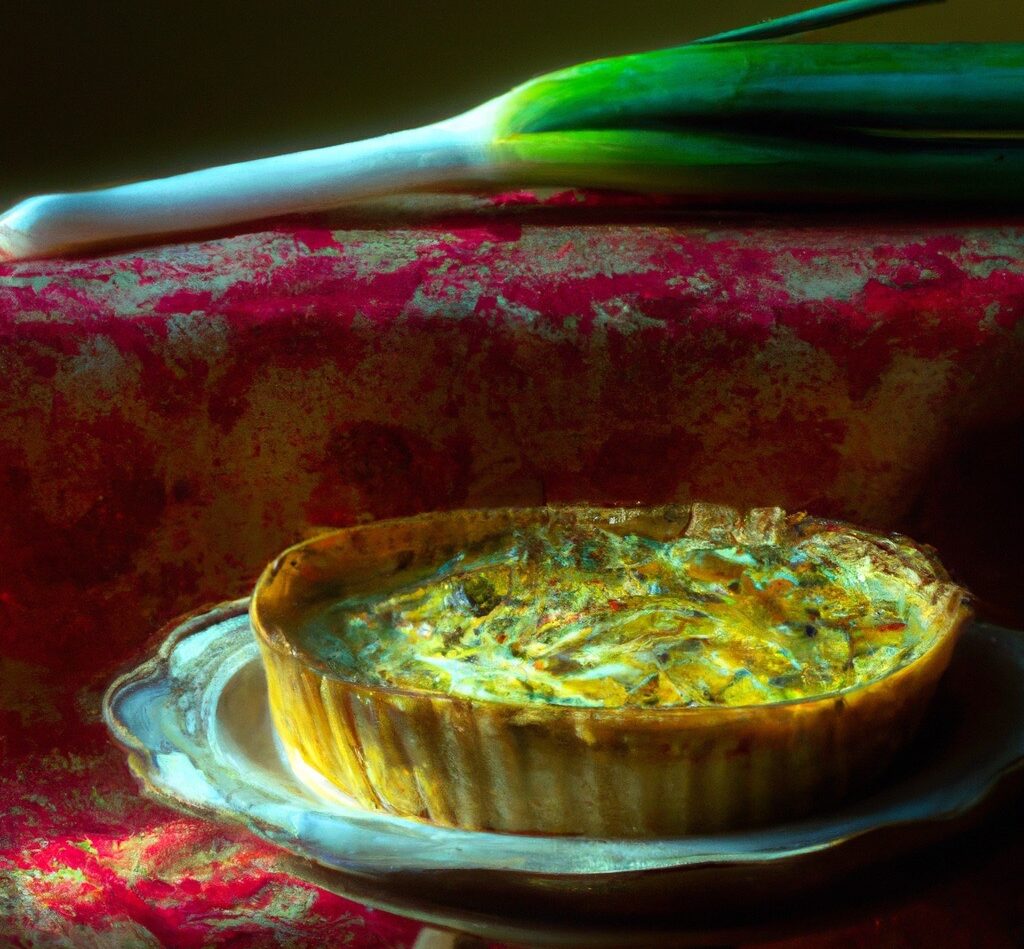
Quiche aux Poireaux
If you’ve ever wondered how to make a Quiche aux Poireaux fit for dignitaries, read on to find out.
Literally, in 1960, there was a time that Quiche aux Poireaux got international headlines for interrupting a massive conference of world leaders.
This quiche is made with leeks, onions, and Gruyere cheese.
It is also a variation of Quiche Lorraine and is a traditional recipe from the region of France known as Brittany. More specifically, it heralds from Alsace in the northeast.
Equipment to have on hand:
- 9-inch pie dish
- Mixing bowl
- Whisk or fork
- Skillet or pan for sautéing the leeks
- Measuring cups and spoons
- Oven
- Spatula
- Knife and cutting board for slicing the leeks
- Optional: grater for grating the Gruyere cheese.
Ingredients:
- 1 unbaked pie crust
- 3 leeks, washed and sliced
- 3 eggs
- 1 cup heavy cream
- 1/2 cup milk
- 1/2 cup grated Gruyere cheese
- Salt and pepper to taste
Serving Size:
A 9-inch quiche will serve 6-8 people as a main dish, or 8-10 people as a side dish.

Instructions:
- Preheat oven to 375F (190C).
- In a skillet, sauté the leeks in butter until softened.
- In a mixing bowl, beat together the eggs, cream, milk, Gruyere, salt and pepper.
- Pour the leeks into the unbaked pie crust.
- Pour the egg mixture over the leeks.
- Bake for 35-40 minutes, or until the quiche is set and golden brown on top.
Plating Suggestions:
- Serve the quiche warm or at room temperature.
- Garnish with chopped chives or parsley for added color.
- Serve with a simple green salad for a light and refreshing side.
Note: You can add bacon, ham, or any other ingredients to your liking.
French President Charles de Gaulle in the 1960s was known to be such a picky eater and had a preference for very few simple, hearty dishes like Quiche aux Poireaux.

According to one story, during a state visit to Germany in the 1960s, de Gaulle was served a fancy and elaborate German dish, but he refused to eat it, asking instead for a slice of Quiche aux Poireaux.
He got that slice, and the international press made him pay for it.
Fortunately, many of his fellow French found it to be a positive act of national pride.